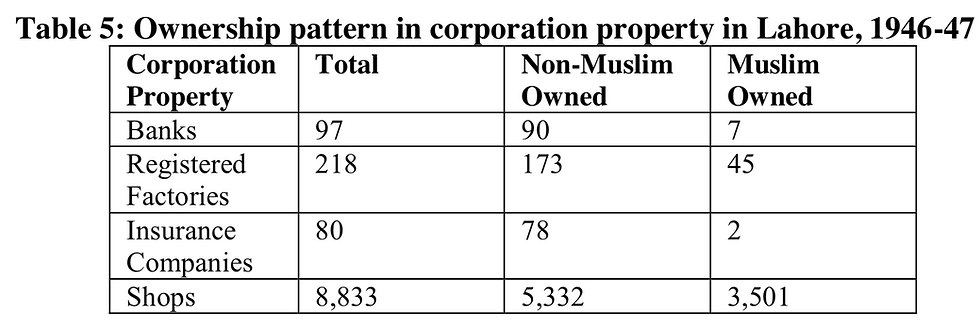In Ilyas Chattha's (University of Southampton) research paper on Lahore, here are some interesting points.
Excerpt below:
http://www.global.ucsb.edu/punjab/sites/secure.lsit.ucsb.edu.gisp.d7_sp/files/sitefiles/journals/volume19/no2/Chattha.pdf
There has been considerable research on the under-representation of Muslims in trade and industry in contrast to the Hindu-Sikh exploitation of new opportunities for economic advancement. Lahore’s Hindus and Sikhs dominated the retail, commercial and wholesale trades, and controlled the industrial and education sector. The industrial and commercial enterprise of this trading class had built up a large number of factories, workshops and commercial institutions involving larger capital in various areas. A 1943-4 survey of the Punjab Board of Economic Enquiry enumerated non-Muslim shops in the city at 5,332, compared with 3,501 owned by the Muslims.
Most of the shops in the Anarkali bazaar and at the Mall Road, as well as in older commercial areas in the inner city such as Delhi Gate, Akbari Mandi, Kishera bazaar, Chuna Mandi and Rang Mahal and around the Shah Almi gate were in non-Muslim hands. A similar pattern also existed in factory ownership in Lahore, as the survey of the Punjab Board of Economic Enquiry reveals. There were 218 registered factories in the city owned by ‘Indians’; out of these as many as 173, or 80 percent, were owned by non-Muslims. The total fixed and working capital invested in these factories amounted to Rs 60.05 million in the period 1943-4. The share of the non- Muslims in this total amounted to Rs 40.88 million - about 80 percent of the total investment.
